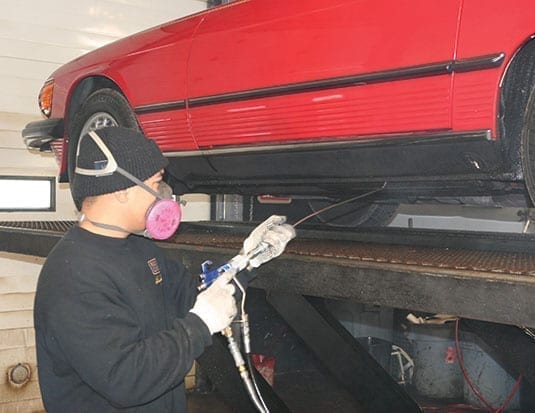Creating new partnerships can lead to very positive results.
This past summer, Krown Rust Control teamed up with the University of Windsor to develop a Corrosion Index. Basically, it’s a consumer-oriented metric designed to both measure and communicates the amount of rust that accumulates on a vehicle after a certain period of time whether it’s treated with a rust control product or left untreated.
Our association got involved with the project, and we had some of our members supply parts for the study.
Additional benefits
Beyond the consumer message that protecting your vehicle using a rust control product will keep it on the road longer, there are additional benefits as well. Keeping the vehicle in circulation longer reduces the impact on the environment since it isn’t being recycled prematurely.
There are also additional benefits for recyclers when the vehicle is finally retired. The parts salvaged from it are in better condition. This means they can be more effectively used on other vehicles, promoting better vehicle safety and functionality, while recyclers can also get a premium for them.
Teaming up with Krown and the University of Windsor is part of a larger strategic initiative to spread awareness about the role that automotive recyclers play in the circular economy. Often, there isn’t a great deal of understanding about what we actually do, but when you explain it through things like the connection between rust control and recycling, it can really change perspectives.
Long term outlook
Recyclers are in a fairly unique situation because they need to learn about a vehicle once it’s manufactured and driven off the lot, even though they won’t actually get their hands on it until up to 10 or 12 years down the road. When it comes to any issue that is happening in the automotive sector, we want to make sure we pay attention to it and the impact it is likely to have on our segment of the industry. That means understanding the materials used, how they are put together and taken apart, and how different parts wear and last.
The Corrosion Index is one of a number of initiatives we’ve been working on with Krown—another includes consumer education videos that play in Krown centres. Customers waiting for their vehicle to be rustproofed can see what’s involved with the recycling process from handling scrap tires to what happens when a vehicle is crushed. It’s general interest and somewhat anecdotal but again, it also serves to showcase what certified recyclers actually do.
Greater understanding
About 7 or 8 years ago, when our industry went through the certification process and we worked with the federal government on programs such as Retire your Ride, there were those that looked at us and said, “Why would we put extra regulations on ourselves when there are other businesses down the street that don’t have to?”
Over the longer term, however, creating these certification programs and spreading awareness has helped differentiate us, and it has led to all sorts of positive developments such as specific vehicle programs.
Recyclers have a key role to play within an automotive repair economy that also includes insurers and collision repairers. Ideally, we take the total loss vehicles from insurers, part them out and provide quality parts to repairers at the right time. When we’re able to do that more effectively, it makes the relationship between the insurer and repairer work better and creates an entire process that’s just so much more seamless and circular.



